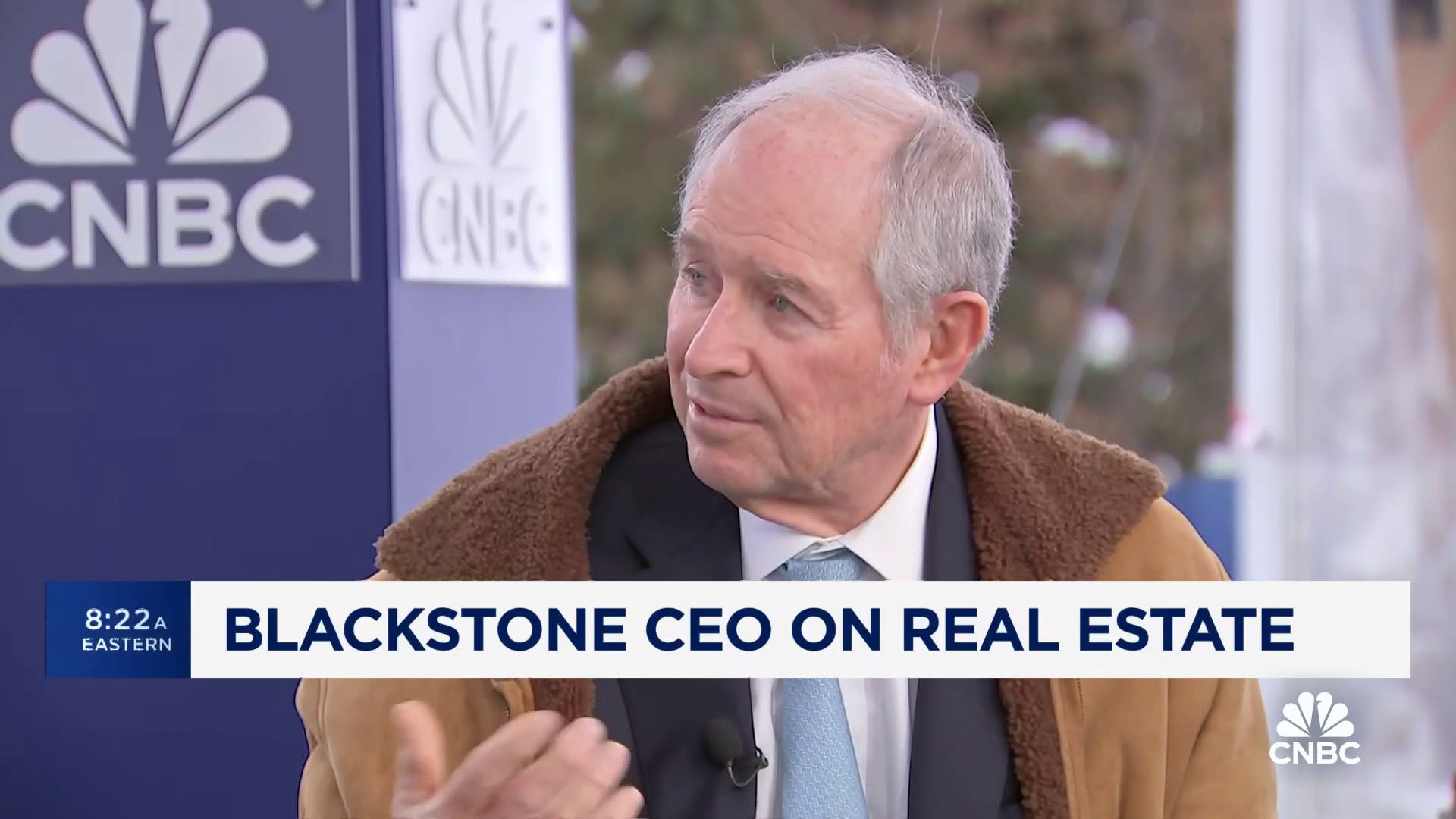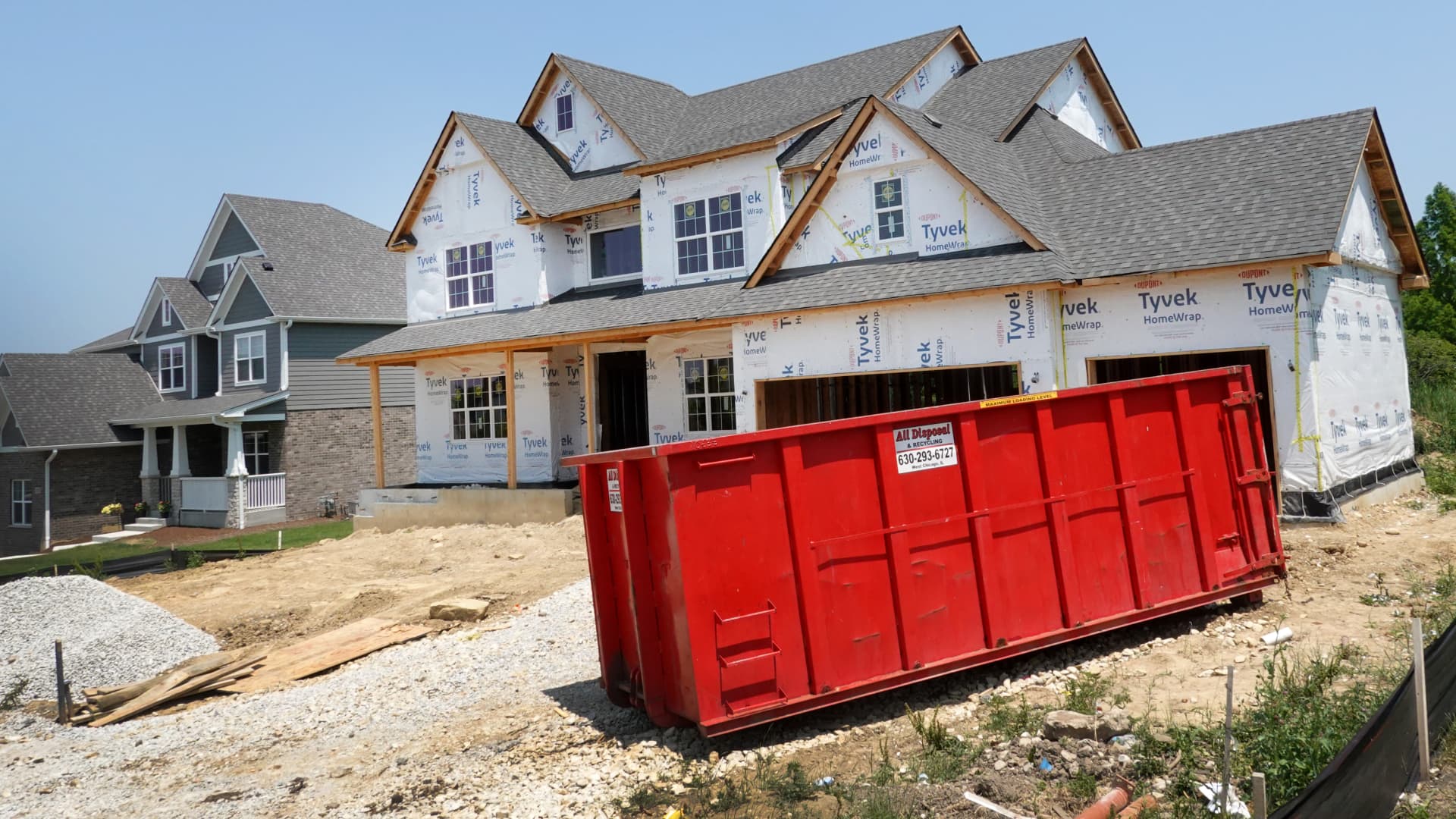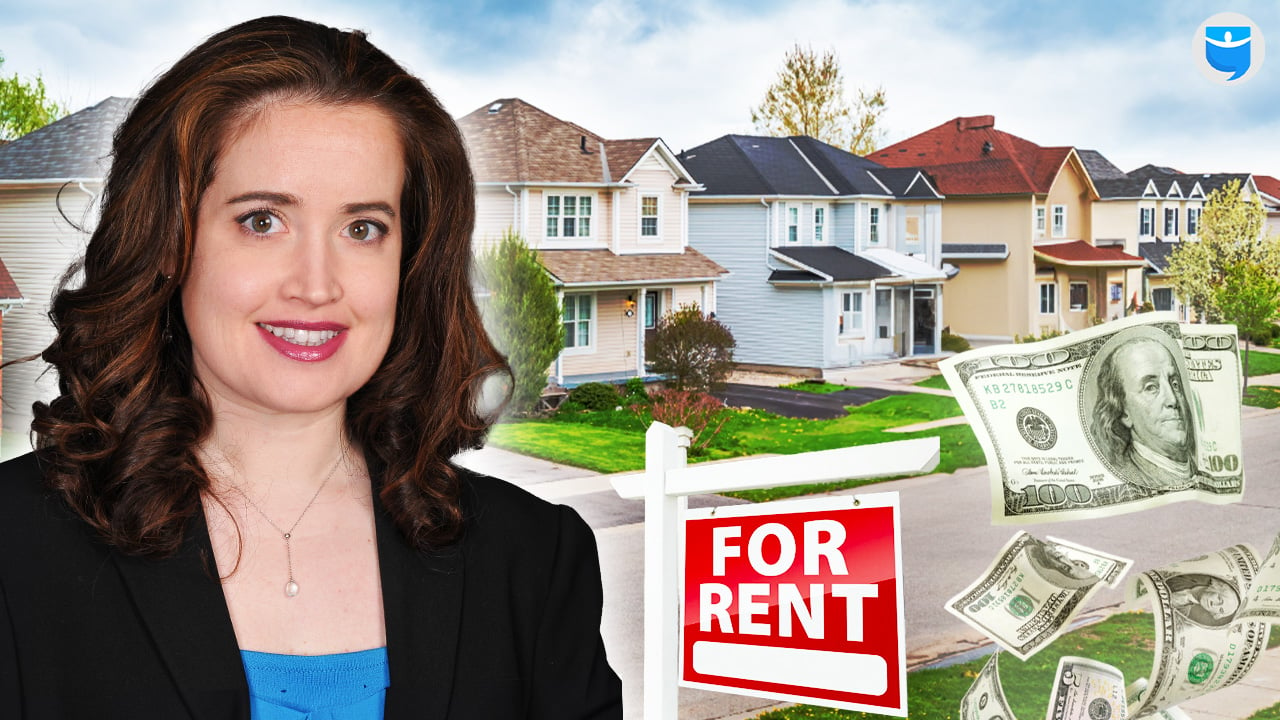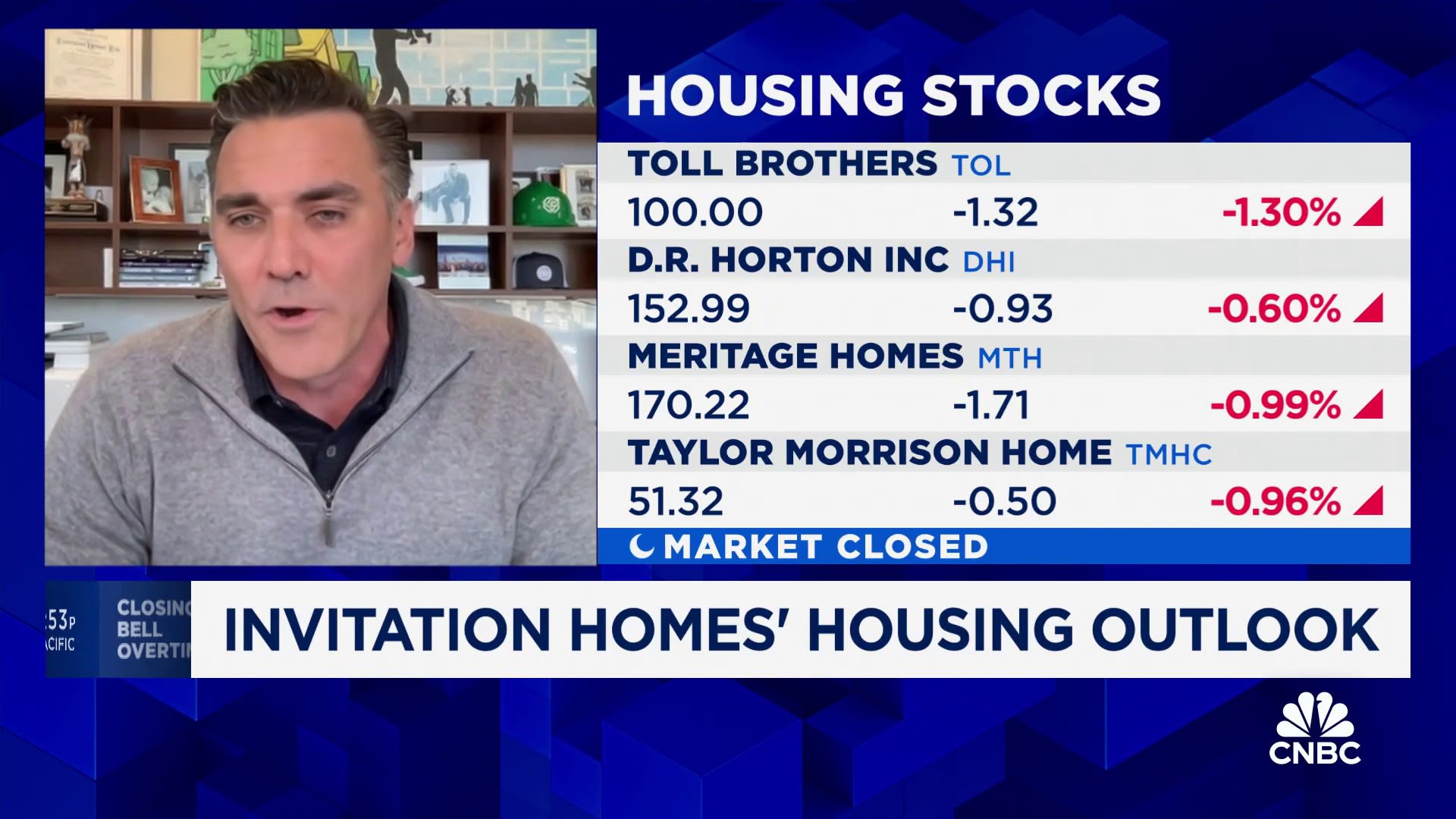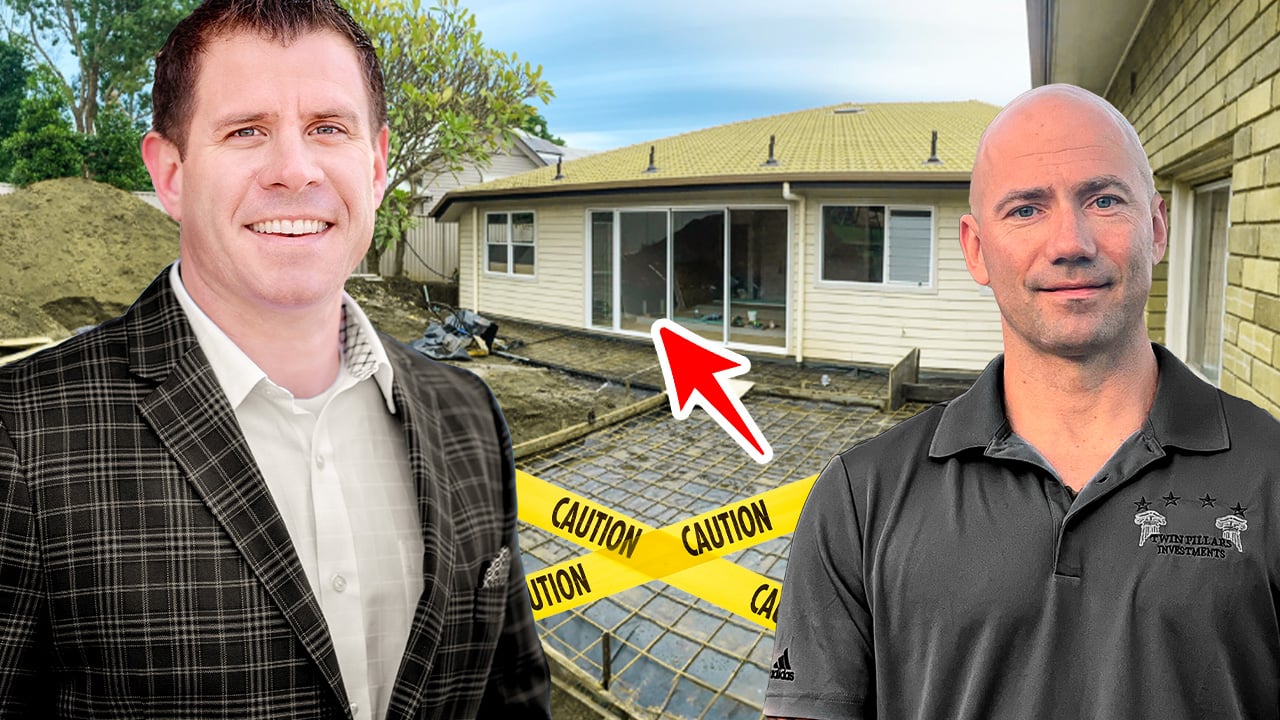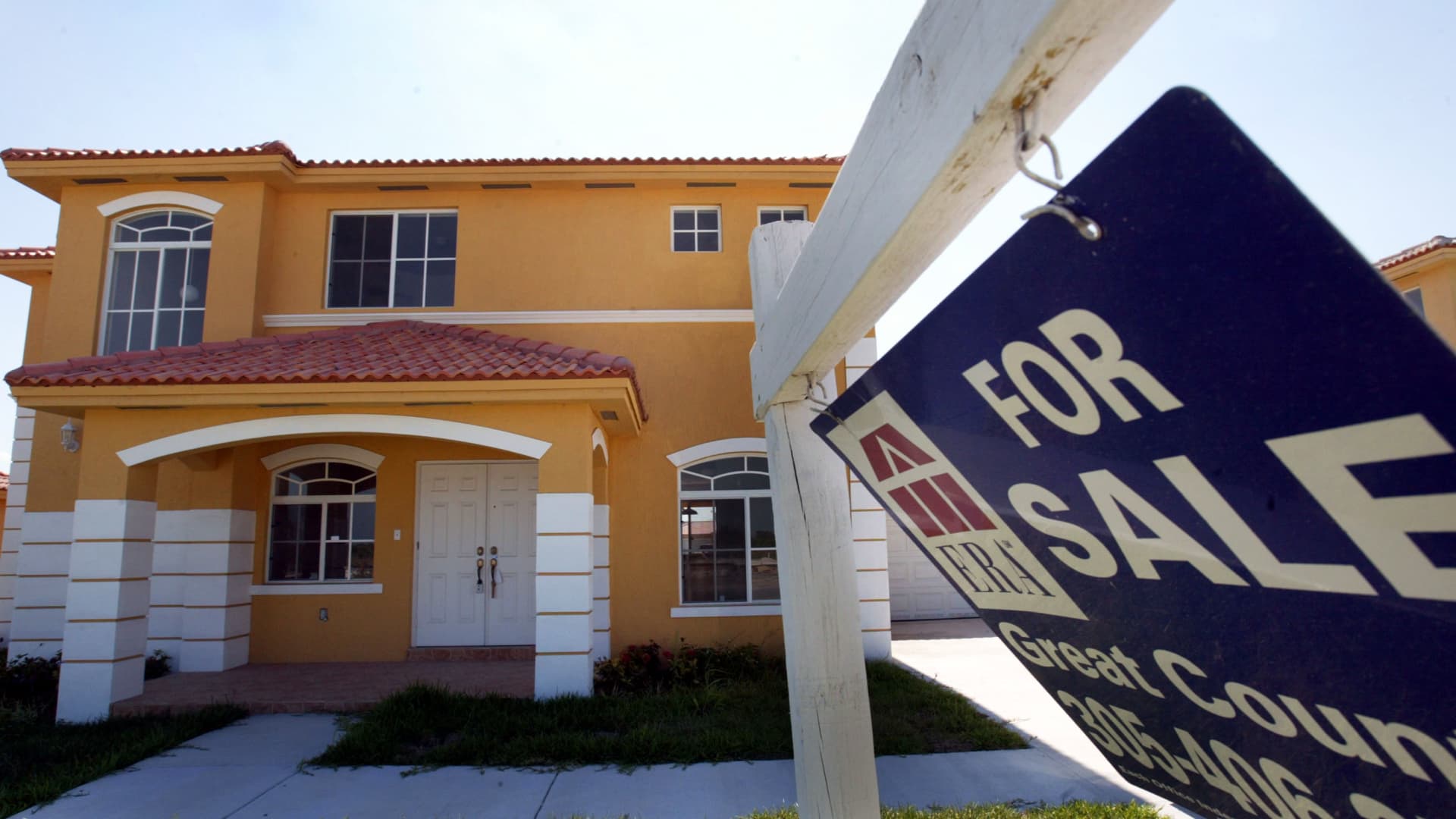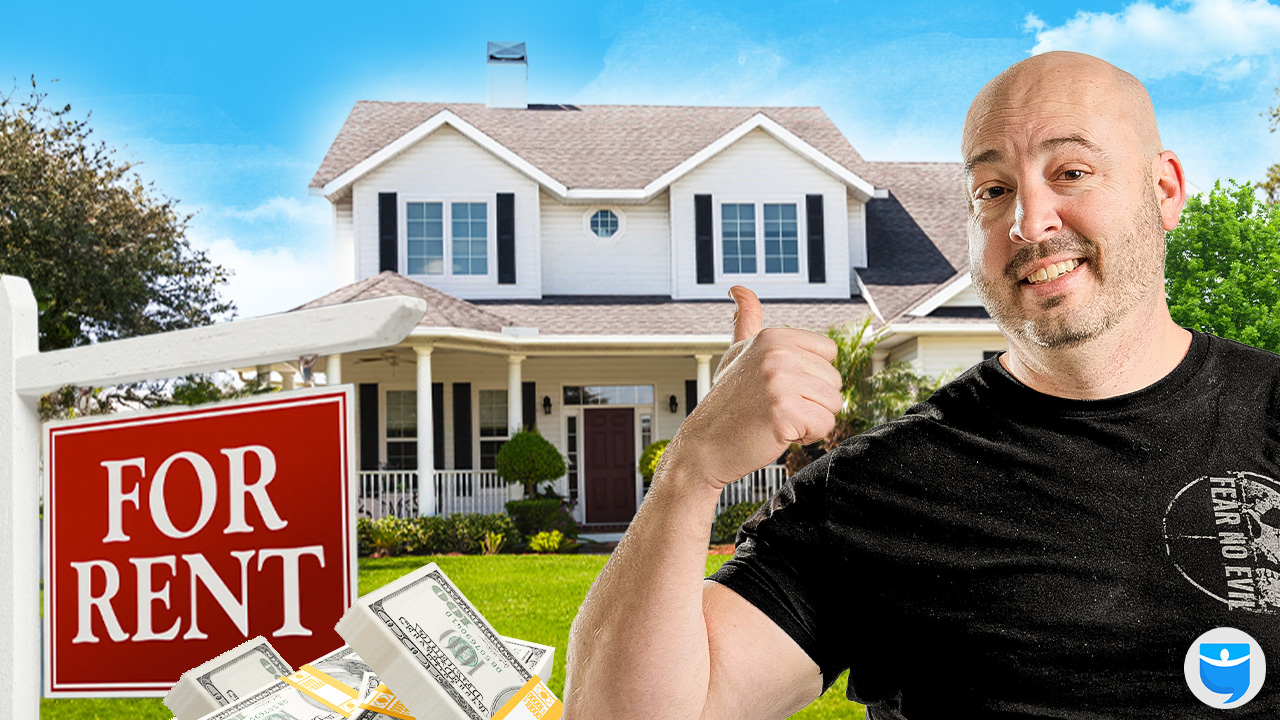David:
This is the BiggerPockets Podcast show 873. What’s going on, everyone? This is David Greene, your host of the BiggerPockets Real Estate Podcast, joined today with my buddy, Rob Abasolo.
Rob:
On today’s show we’re going to be talking to a real estate investor named Kate Lynch about her journey from a Wall Street investment banker to a real estate professional in her 40s.
David:
This is a great show to listen to if you’re a working professional wondering how you could spend more time with your family, your children, and those you love, and also get the largest return on your investment.
Rob:
After this interview, we’re going to be answering an audience question in our Seeing Greene segment, so you’re going to want to stick around for that.
David:
That’s right. You’re going to love that question. Rob and I answer one of the most commonly asked questions right now, very hot topic on if you should rent a property out as a short-term, a midterm, or a traditional rental. And without further ado, let’s get to Kate.
Kate Lynch, welcome to the show. How are you today?
Kate:
I’m great. Thanks for having me.
David:
All right, Well, thank you for that. First question, when and how did you become an investment banker?
Kate:
Oh, gosh. I was just your stereotypical overachieving undergrad, straight-A student, really hustled my way into a job on Wall Street, I wanted to be doing the best in anything that I could do, and that was the crème de la crème for people interested in finance. So after I got an MBA, I just worked my tail off until I got there.
Rob:
Is it true that investment bankers work 100-hour weeks? I’ve always heard this from every investment banker that I’ve ever met.
Kate:
It was when I was on Wall Street. We literally would work from probably 9:00 in the morning until… Well, you had to work until your job was done, and that often meant you were there the next day. If it’s not done, you’re still working the next day when people show up for work. I probably had a dozen or so of those all-nighters when I was living in New York. But yeah, it was 9:00 AM to between midnight and 3:00 AM on a regular basis.
David:
Did it look like the show Billions?
Kate:
It was intense. It was amazing and fun and it was the best thing I’ve ever done in terms of my career, but it was hard.
David:
I’ve always wondered if those New York stereotypes actually play out because I’ve never been there, if it’s like you’ve got people screaming at you like Boiler Room, and then papers are flying up in the air, even though we don’t really use papers now. And someone’s showing up with a hot dog or a slice of pizza that they just got off because that’s all you could eat.
Rob:
Wait, hold on. You’ve never been to New York?
David:
Let’s not make this about me, Rob.
Rob:
We’ve got to go to the Spotify Studios and do some shows out there, man. You’re missing the best pizza in the world.
Kate:
It was intense. We were working from 9:00 in the morning until 3:00 in the morning, we ate every meal at the office. And I used to tell new recruits that were asking, “Oh, how do you get a work-life balance?” And I was like, “Your work-life balance is you’re friends with people sitting next to you because you don’t leave the office ever. And if you don’t like those people, your life sucks.”
David:
Was there a lot of forget-about-its going around?
Kate:
There were a lot of F-bombs.
David:
Yeah, I can see that.
Rob:
Different F-word, yeah. So obviously, this is a lucrative career from my understanding, and lots of hours go into it. What did this allow you to do financially, working in investment banking?
Kate:
Yeah, I was probably making, when I was living in New York City, between 400 and 600 a year.
Rob:
Wow.
Kate:
Yeah, and that was at a junior level. The senior level bankers are one to two million. And what’s funny though is that New York is just so ridiculously expensive that you don’t get that much for the money. So when I was in my late 30s I decided to move home to Cleveland, and I took a little bit of a pay cut because of that where I was making 300 to 400 a year, but you can get a house literally 10 times the size of what you get in New York for the same price. We have a house on Lake Erie, we have a swimming pool, we have a beach, we’re 10 minutes from downtown, we can see the skyline.
It’s ridiculous what you can get in Cleveland versus what you get in New York. People making one to two million a year, I would say, they take more expensive vacations but they spend way less time with their family, and it’s just not, I think, a great trade. You add a couple of zeros, but you’re not getting anything more.
David:
So was there a point where you realized, “I’m good at doing this, I’m making good money, but it’s a hamster wheel I’m never going to get off of”?
Kate:
Yeah, I mean, yes and no. So, my job was advising the CEOs of banks on buying or selling banks, and raising hundreds of millions of dollars of capital debt and equity to support their growth. That’s pretty exciting stuff, and it was fun, and I love the financial analysis, I loved the fact that I was giving advice to CEOs of banks around the country. It felt pretty cool to do until… well, obviously I didn’t have much of a social life when I was working those kind of hours, and so I didn’t get married until I was about 40.
And at that point I didn’t have much of a window to have children, even though we wanted to have kids. So we decided just to have kids if possible, and we had three kids in the four years after we got married. And then I was still expected to be on the road two to three days a week. Because I was living in Cleveland, I was driving to meetings around the Midwest. So I would leave the house at 5:00 or 6:00 in the morning, drive four or five hours to meetings, try to bang out two or three meetings in that day, and then get home between 7:00 and 10:00 PM.
So I had three babies at home who I wouldn’t see two or three days a week. I was pumping milk in the car and then turning it over to my… I had both a full-time nanny and an au pair living in our house who were taking care of my kids. And so that was the point when the job turned from awesome and fun and lucrative to, “What the heck did I get myself into.”
And just to give you a sense for my mindset prior to having the kids, I actually told my boss before having the first baby that I was not going to take maternity leave. I thought that, “I’m used to working long hours and little sleep and I can handle this.” And I really had no concept of how hard it was going to be to take care of one newborn, much less three of them. And so then I just had that moment or a feeling that so many people, I think, in your audience have, which is, “I’m in a place in my life that I need to make some changes,” and it’s really hard.
Rob:
Yeah, I think everyone would hear how much one can make in this industry and be like, “Oh, yeah, with the money, that buys happiness.” But I think most people that have been there probably understand that there is a moment where money maxes out on the happiness scale, and you really start missing all the things in your life that you had to give up to even get there.
So you’re at this point, I think you’re starting to make that realization. What was the exact moment where you felt you needed to make a change?
Kate:
Well, so we had a lifestyle that required the income that I was bringing in. And I kicked around like, “Do we sell the house and the boat, and give it all up and go live in the middle of nowhere?” But I just didn’t think that having built this life over the last 25 years that we would be happy living off the grid somewhere, living off the land. And I had a growing sense that I needed to do something else, and that searching phase, where you’re trying to say, “Well…” Listening to podcasts, and what’s out there, how can I achieve this financial level without this job? But it wasn’t until actually the podcast you guys did with Ashley Hamilton that I-
Rob:
Oh, nice. Yeah.
Kate:
Oh my gosh. So I was literally driving home from a meeting at probably nine o’clock at night, it’s dark outside, I know my kids are going to be asleep when I get home. And I listened to that podcast, and it just changed my mindset 180 degrees because she was in her early 20s, she had two kids, a single mom making $20,000 a year as a waitress. And when I heard her say that she has acquired 10 properties and is home with her kids, it was like, “Oh.” That hurt so bad. I worked on Wall Street, I have an MBA in finance, I had more than a million dollars in my 401(k), and here I was getting home after my kids went to bed, not seeing them for a whole day. It just felt like, “I messed this up,” or at least, “I can do better than this.”
And I thought, “If I can help a multi-billion dollar bank figure out how to not fail through my financial skillset, surely I can figure out how to get myself to a place of financial independence, especially if somebody like her can do it. Why should I not? And I really owe it to my kids to go from thinking about it and wishing I could do it, to just getting it done.”
And that literally, after hearing that podcast, I was committed, “I’m going to make this happen and I will find a way, or at least I’m doing something about it, I’m not just going to keep wishing for it.”
David:
That’s amazing. Well, for anyone that hasn’t heard that podcast, I can attest to how amazing it was. Before I was ever on the show, I remember listening to that as a listener, and that’s episode 331. So go check that out after this podcast.
But I want to ask, Kate, because obviously you’re feeling all of these… I guess the wheels are turning, you’re listening to this episode, and you get into real estate. Do you feel like you had any advantages getting into real estate, coming from investment banking? And if so, what were they?
Kate:
Yeah, certainly my ability to run numbers is relatively good. But running numbers in real estate is not all that complicated, it’s just how much do you invest and how much you get back. Maybe just the willingness to crunch numbers over and over and over again until I find the answer that I’m looking for. But yeah, I started looking into every possible avenue, listening to the podcast and reading the books, figuring out where can I get the most bang for my buck?
Like I said, I had about a million dollars in my 401(k), that I decided I was going to use, and I wanted to get as much as I could from that. And so is it commercial real estate? Is it storage facilities? And just running numbers and numbers until I found a path that I thought would maximize the cash flow for the amount I had available to invest.
David:
So you had been exposed to real estate, you liked it, you just wanted to figure out which type of real estate that you were going to get into?
Kate:
Yeah, my exposure purely came from BiggerPockets, right? It wasn’t like I had zero experience with real estate before. And listening to some of your podcasts with other guests, I often heard people telling a story of they were trying to replace 30,000 or $40,000 of income and so they could get into a property that was earning them $1,000 a month. And I was like, “If I have a property that makes me $10,000 a year, I literally need 30 to 40 of them in order to replace my income.” So initially I thought, “I don’t know if residential real estate would get me there.” Ultimately, as I continued searching, I figured out that I could make it work with primarily triplex in Cleveland using a short-term rental strategy.
David:
I always think it’s funny when people say, “Oh, I’ve got 55 units somewhere.” And you’re like, “I really love real estate.” I’m like, “Well, you can love cats, but you don’t need 55 of them. That’s not always the best way to go.”
Kate:
My goal is having time, right?
David:
Some people need 55 cats.
Kate:
If I want to have time with my kids, 40 properties doesn’t seem like the right way to get there.
David:
Yeah, that’s a great point. You’re just jumping out of one problem into the next one. So, awesome, we’re going to get into how Kate built that small and very mighty portfolio that replaced her investment banker’s salary right after this quick break
Rob:
And we’re back. We’re here with Kate Lynch, a former real estate investor who made a change later in life to go all in real estate. Kate needed to replace her huge W-2 salary with real estate income in order to gain back time with her family, and we’re going to break down exactly how she did it.
David:
How did you go about creating that plan to invest in real estate while you’re still working this full-time demanding job?
Kate:
Yeah. So I just was at night on Zillow, and like I said, listening to everything I could online because I was driving so much, I had a lot of ability to just listen to everything I could. Certainly, Rob and his channel teaching people about using Airbnb, and how much more lucrative that was, was a big factor for me. I wanted to get into real estate in a way that felt less risky. So obviously, David, you wrote the book on the long distance real estate investing, but I wanted to do something, or at least I would say I spent more time analyzing opportunities closer to home because it felt like a lower risk approach to me. And I found that you can buy a triplex in Cleveland for about the same price as a single family home, but with way better cash flow.
Rob:
So I have a question, I think there are probably a decent amount of people that have some liquidity or some amount of money in their 401(k) in the stock market. You said you had about a million dollars, which is obviously a very healthy start for anyone. But what was the actual process? How do you leverage money? If you have a million dollars in the stock market, how do you get that money out and then apply it towards real estate? Is there a particular process? Is it a self-directed IRA? Tell us a little bit about the movement of funds there.
Kate:
Yeah, I’ve heard about people using processes to keep their money in a 401(k) and invest in real estate, but I couldn’t do that because I wanted to live off the cash flow. So for me, I just liquidated it. And there’s a 10% penalty, and you have to pay tax on the income, but as you guys know, the benefits on the tax side from the real estate I was able to use to offset a lot of that income that I had to report. I was lucky enough to be able to… [inaudible 00:12:55] my husband qualifies as a real estate professional, so I was able to take a big advantage of that tax benefits in order to not have a huge hit on the tax side.
But I liquidated it. And it felt scary to close out my 401(k). But if you think about it, it’s really supposed to be a retirement account, and I was using it to retire at 45 instead of 65, so I guess I did use it as a retirement account, I just had to pay the fees for doing it too early.
Rob:
Sure. Yeah, no, I love that. I love that the actual answer is like, “Oh, I just took the hit.” Usually there’s always some secret answer, or someone’s got some strategy that no one understands, but I love it. Obviously, you put money in there, you got it to a million bucks, I’m sure you made a good return there. Can you talk a little bit about the return profiles that you were getting on your investments in stock market versus your real estate investments? How does the ROI compare with both asset classes for you?
Kate:
Yeah, so the long-term returns in the stock market are around 10% per year. There’s certainly great years and there’s terrible years in the market, but over the last 80 years, it’s been an average of around 10% per year. And my return, I wasn’t a phenomenal investor. As an investment banker, I was advising companies on buying other companies, I wasn’t doing individual stock trading. But I had decent performance just like anybody else who invested over the last 25 years, mostly in index funds.
But in real estate, I’m getting, I would say, around 45, 50% return on the cash that’s invested in my portfolio, which is obviously a huge win and certainly worth paying a 10% penalty to get there.
Rob:
Yeah, there’s a delta there. Well, that’s amazing. Okay, so I guess I have to ask because obviously I like short-term rentals, and you said very nice things, so I appreciate you watching the channel. You mentioned you decide to get into the real estate game, the short-term rental game, and you’re like, “Do you know what? I’m going to do this. I’m going to get into short-term rentals in Cleveland.” That is not typically a market that I have my eyes… If someone came to me and they said, “Hey, I want to want to start here,” it’s not necessarily where I’d point them. So what about Cleveland appealed to you? What was it about that that made you go all in there?
Kate:
From a starting point, I live in Cleveland, so it always helps to know the market and what the opportunity is there, and what the neighborhoods are that are good to invest in. But I think it really comes down to something David talks about all the time, and that’s the… you have that inverse relationship between appreciation and cash flow. And I think that when you talk about that, most people probably… If you were to draw a graph of that relationship, you would probably start your appreciation at zero and up.
The Cleveland market, interestingly, I think you actually blow well through the zero metric on the appreciation side and you have actual negative equity going into the property and incredible cash flow. So I think you get way out there on both parts of the spectrum. And the reason for that is properties in Cleveland, you can buy a triplex for between 200,000 and $300,000. And the long-term rent value on those is around 1,000 a month per floor, so a normal investor is getting 3,000 a month.
Because of that, the market is one where the renters don’t really expect you to update the house, they’re fine with living in a place that hasn’t had the kitchen or bathroom updated in 40 or 60 years. They’re also okay with the fact that they have a window air conditioner and you have to turn it off when you blow dry your hair if you don’t want to blow a fuse in the house. So when we started buying properties, we knew we would have to do renovations. They ultimately were far more expensive than what I thought it was going to be going in. So I thought I was going to go in [inaudible 00:16:28]. Yeah, right.
I thought I was going to go in with a burst strategy. The first place that we bought, we just bought for 180,000 of cash, and we spent about a hundred thousand dollars to renovate. We had to renovate three kitchens, three bathrooms, all new appliances. It’s about 5,000 square feet of hardwood that we had to refinish, and it’s gorgeous, but that’s a lot of square footage to refinish. After spending around $280,000 on the house, I was ready to get a loan on it and it appraised for 235,000. So that feels like a loss except that… so I was able to pull out 180,000 from that loan, so I had net 100,000 in the house. And the first year that I put that on Airbnb, I made $50,000 profit.
Rob:
Wow. Okay. So let’s recap that a little bit. So you wanted to do the burst strategy, which is where you buy it, you rehab it, you rent it, and then you refinance, and hopefully you get the ARV, the after repair value, so high that you’re able to get all of your money back out. In this instance, you were able to get 180,000 out of 280,000 out, and you left $100,000 in the property. Most people see this oftentimes as they failed at the task, that they didn’t really perform it. But David actually talks about this quite a bit in BRRRR, his book, go check that out, and talks about… David, your philosophy here is even if you have to leave some equity in the house, it’s not really a loss because equity does actually exist if you were to go and sell it, right?
Kate:
But not in my case because I can’t sell it for 280.
Rob:
Because it appraised for 235?
Kate:
Yeah.
Rob:
But that’s okay because then in a year of renting it, then you made that $50,000 differential?
Kate:
Yeah. So from a return on investment standpoint, I’m making $50,000 a year on $100,000 investment, that’s a phenomenal return. That’s why I said, it is negative appreciation. And the long-term rental market in Cleveland is fine with having terrible plumbing and electric. But the short-term rental market, as you know, Rob, they’re not going to put up with a nasty old kitchen, they’re not going to put up with gross rugs and scratched up floors. The place has to be gorgeous to get on the first page of Airbnb. And I was buying houses that are 120 years old, and absolutely beautiful, but they’ve never been renovated, I literally have 120-year old bathroom.
So to get that plumbing, that electric, and all of that taken care of, it just costs more than what the thing is going to be worth after you renovate it. And for me, like I said, I was looking for the maximum cash flow for every dollar that’s invested. It would’ve been great if I could really do a BRRRR. In this case, I have about 30% cash in the house. A traditional house you’re trying to put down 20%, in this case, I’ve got more than 30%.
Rob:
David, how often did you run across this in your BRRRR journey? Did you ever come across, I guess, negative appreciation the way that Kate’s talking about here? What’s the solution? Is it just usually time and waiting it out?
David:
Well, we’re saying appreciation. Does that mean equity in this case? Because appreciation would be the value of the property going up over time, but in this case, we’re talking about the appraisal coming back for less than what we thought, so that would actually be equity, right?
Rob:
That’s what you mean, right, Kate?
Kate:
Yeah, I have less equity in the house than I invested in it. No doubt.
David:
That isn’t common, but it did happen. Over 40 BRRRRs, that probably happened two or three times, I would say. And a lot of that is just appraisals are not a science like people think. It is a measurement of value, it is not the actual best measurement of value. The best measurement of value is what someone’s willing to pay for it, but there’s no way to put that into an Excel spreadsheet, so we come up with an appraisal as some type of method of feeling like we have some idea of value.
And I found a lot of things impact appraisals. One appraiser could think it’s worth more than others. One appraiser could choose comps that are better than others would be. Sometimes you get an appraisal, and as odd as this is, that comes in less when you’re refinancing, but if you were selling the house, the appraisals come in higher. I’ve seen this many, many times over in my career. So that does happen, but that’s okay, that’s why we have different strategies within real estate.
So like Kate had just mentioned there wasn’t as much equity in the property as she thought, but because there is usually an inverse relationship between equity and cash flow, now Kate’s cash flow in $50,000, which I think almost everyone listening would happily take that over the equity. And in four and a half years, you’re just going to pay the whole thing off, and now it doesn’t really matter if you lost the 50,000 equity because you’ve gained 200,000 or $250,000 in equity over that period of time, and you can put a HELOC on it or you can refinance it and hopefully repeat it.
Kate:
Yeah, I wouldn’t say that I would argue with the appraisal. I know what other houses are selling for. And in this market, the long-term rent customers aren’t going to pay for the kind of renovations that you have to do to make a good quality Airbnb. And my contractor on the one house kept telling me, “I think you’re making a mistake, you’ve got to stop.” And I was like, “No, no, I think this is the right path.”
And almost all of these properties are on the first page of Airbnb in my market, and they’re renting for $100 a night for a three-bedroom, 2,000 square foot place that with a huge porch and a garage and laundry for free, and close to the Cleveland Clinic. And so it’s so much cheaper than a hotel where people can stay, I have cribs and rocking chairs in them. But $100 a night is $3,000 a month, times three units.
Rob:
All right, now that we know how Kate developed her strategy, we’re going to dig into her costs, exactly how much money her properties are netting, and how she’s doing this in of all places, Cleveland.
David:
I want to ask, not a lot of people, me included, immediately think of Cleveland when we think about short-term rentals. So what was it that stood out to you that made you think, “I think I can do a short terminal and compete with hotels here,” as opposed to the traditional vacation market that most people think about?
Kate:
Yeah, I think primarily the Cleveland Clinic. So as I was listening to podcasts, a lot of your people on the Airbnb side or even the mid-term side talk about being close to hotel. And Cleveland has a phenomenal world-class medical services center here where I have guests coming from Pakistan who are getting procedures done at the Cleveland Clinic, and their whole family comes with them, and they’ll stay for two months. And so I think that that is a huge draw. And all of our properties are relatively close to the Cleveland Clinic, and that, I think, is very impactful in terms of… Like you said, I’m competing with a hotel, but for people who are traveling with their family and want to stay together and not in hotel rooms.
David:
Yeah, and I suppose you had the backup plan of, “Well, if for some reason it doesn’t work, I can rent it out as a long-term rental, and I just have the prettiest long-term rental in the world.”
Rob:
Well, on the note of having a property that does stand out a bit, maybe, from a hotel, whether it be price or cost or whatever, you’re furnishing three units, which is pretty expensive to do at once, so what is the average that you’re spending to typically furnish your short-term rental units, especially in a triplex situation? Because it’s very different for furnishing a three-bedroom home, for example, where you’re just buying the sofas one time, you’re buying one TV for the living room. You’re buying everything three times for every single unit, so surely it’s got to be expensive.
Kate:
It adds up, I have a lot of points on my Amazon card. Yeah, well, I will say the first house I bought, it was all Facebook Marketplace. And listening to you, Rob, talk about buying, what you say, buy nice not thrice, I learned my lesson with buying some sort of cheap stuff the first time around because you’re so scared getting into it the first time. I try to buy high quality stuff that will last because it’s going to get a lot of abuse. But yeah, I think I’m probably around $10,000 per floor, which is, I think, in the range for any two to three-bedroom space.
Rob:
That’s actually not bad at all. And now that you’ve got it running, what are you making in general on your entire short-term rental portfolio, and how does that compare to your job in investment banking?
Kate:
Yeah, so we closed on the first house in July of 2021. At that point, my kids were two, three and five years old, and that’s when I decided, “I’m going to make this happen.” As soon as that first one started running, and the dollars were bigger than I even expected it to be in terms of the… I had a sense for what the rates would be, but the occupancy… They stay really full, so the income was really strong, and I just said, “I’m going to hit this as hard as I can.”
In particular, I was lucky because rates were still low at that point, so I bought three more houses that first year. I had four in the first year, and then a couple of weeks before the kids’ school let out for the summer in 2022, I gave my notice at work. So I quit that job about a year after I started down this path. At that point, I only had the four houses making around 200,000 a year, but I could see that the strategy was working, and I was going to get there, and I wanted to be home with the kids that summer. So I spent that summer with them, then over the next year and a half, we bought three more properties and we now have seven investment properties, and we are making around 350 to 400,000 a year.
Rob:
Net or gross?
Kate:
Gross. Oh no, that’s my profit. Yeah, that’s what I’m taking home.
Rob:
You’re making 350?
Kate:
I’m making 50,000 per house times seven, yeah.
Rob:
Oh my goodness, you’re living the dream. That’s amazing.
Kate:
Granted, that’s seven properties, it’s like 16 units. And yeah, the power of, I think, the automation in the short-term space, so I try really hard to automate it. But yeah, I get my share of the phone calls at night from people telling me that, whatever, the power is out or they can’t get into the unit.
David:
See, that’s a great segue into my next question. Running a, what’s it, 14 or 16 unit short-term rental portfolio is not without stress. How does it compare to the stress of being a full-time investment banker?
Kate:
So in investment banking, when you’re at the top of the food chain, it’s a commission job. So the stress there is you’ve just got to find another deal, and you’re competing with the other investment bankers to win on every deal. And you don’t have control over the outcome. I think that the stress in that industry was big stress. Here, it’s a lot of small things. So when somebody calls you and says the heat’s not working and it’s 10 degrees outside, you have to solve that problem, and I guess the…
But the worst-case scenario is you just have them stay at a hotel and it sucks, but you suck it up and you’ve got to pay, Airbnb makes you pay for the hotel. And that’s happened a couple of times, but the dollar amount of the impact on that is 300, $500, I would say, versus investment banking. You’re winning deals that are 300,000, $500,000 of revenue that either going to make or break your year.
David:
All right, so I’ve got a two-part question. First part, how much more time are you getting with your kids now than before?
Kate:
Oh, it’s night and day. They wake up every morning, and I’m able to wake up with them, hug and kiss them in the morning, and they go to bed every single night with hugs and kisses from mom. And both of you were influential in me achieving this, and I know that probably that my children will never say thank you to you, but they have their mom at home in a way that is just so special, and I appreciate that from you guys, that you guys were able to put that content out there to make that happen.
David:
Did you hear that, folks? BiggerPockets making sure kids get good night kisses since 2013.
Kate:
But what’s interesting is, so my youngest is in preschool now, and I’m with them, I drop them off at school, I pick them up. But now during the school year, I have a fair amount of time, and I wanted to talk about on this podcast… because when I was making the decision to leave my job and go into real estate, I felt like I was walking away from the career that I had built over 25 years and I felt like I had to make that choice, it’s either this or that. And so I made the choice to walk away from it because my kids are worth it.
But what I didn’t realize is that once you get to the point where you’ve established financial freedom and you have a functioning portfolio that’s relatively stabilized, you also open the door to other professional opportunities that you could never have been part of before that. So I’ve been having people reach out to me, not every day, but once or twice a year, somebody will say, “Hey, would you be interested in this or that?”
My brother actually is an entrepreneur, he started a bunch of businesses. One of them that he owns is a bourbon distillery, and he called me a few months ago and said he can buy wholesale barrels of bourbon at 50% of the value that he can sell them at after two years. And he said, “Do you think we could raise a 10 or 20-million fund around this bourbon arbitrage opportunity?” And because my kids are in school right now, I was able to say, “I’ll look into it.” We did some research, I did some financial modeling, and ultimately said, “This is a phenomenal opportunity. Let’s get it done.”
And now being able to work on something with my brother, and seeing him go into investment meetings and crush it, it is so much more rewarding professionally in a way that I had no idea these kinds of things were going to come along. And I think that there are probably a lot of, probably men and women, but more so women, who are doctors or lawyers and have succeeded in their career, but still feel this pull to be at home more with their children.
And what I found is that once you get that financial freedom, you can still use those skills in other ways. Somebody who’s a doctor could consult with a hedge fund that’s investing in medical technology. There’s other ways to use those skills that aren’t a W-2 job. And it’s funny that I went down this path thinking I was leaving a job I loved, and now I’m at a point where I love the professional aspect of it so much more because I don’t have any of that pressure from the W-2 job, and I can accept opportunities that are on my terms in the hours that are available.
David:
All right. Second part to my question, have you considered carving out a chunk 50,000 to 75,000 a year of that $350,000 income to hire a property manager to screen a lot of the stuff before it hits you so you have more time and energy to put towards some of these other professional endeavors?
Kate:
Maybe someday. I think, like I said, my income that I was trying to replace was 300,000 to 400,000, and that’s where we are right now, and it feels like a comfortable place right now. Obviously, in this interest rate environment, it’s harder to get the kind of cash flow that I was getting initially. So once you start buying real estate, it’s hard to stop. So I imagine that we will at some point be buying additional properties, and so when the cash flow is at that point, then that is something that I would be open to, but for now it’s working the way it is and we’re not-
Rob:
Yeah. I think you’re at that inflection point where 14 to 16 units, that’s about as much as one person can handle. I think 20 is really the max. How long did it take you to do this? How long have you been investing in short-term rentals to build what you’ve built so far?
Kate:
I got the first four in a year, then I left the W-2, and then it took another year and a half to get the other three. Less than three years in July of 2021.
Rob:
You’ve built an income of $350,000 a year in two to three years when most people spend an entire career in real estate trying to make $10,000 a month in, quote-unquote, “passive” income. So you’ve done something that 99% of people don’t do, so congratulations, and thank you so much for sharing your story. That’s just kudos to you. You’ve done it, you’re living the dream, and it’s a perfect success story for what’s possible in this industry.
Kate:
Thank you. And I really want to make sure that I’m sending that message to other people who have that same angst, that it’s possible, and it’s possible to replace a high income job with real estate if you’ve just put your money in your 401(k) over your career, you can get there.
David:
Amen. Thanks so much, Kate, we appreciate it. Thank you very much. I hope we have you back on again, and things continue to grow.
All right. Welcome to the Seeing Greene segment of the show where we take questions from you, our listener base, and answer them for everyone to hear. Today’s question comes from Katie M. in New Jersey. Katie writes, “I’m at an inflection point with work. My job is being restructured and I’m being offered one year’s salary as severance. I’ve been climbing the corporate ladder since college, but now that I have a little one at home, I’m reevaluating everything. I’d like to ultimately build a real estate portfolio that could replace my W-2 income of about $150,000.
“My husband and I bought a duplex in New Jersey with train access to New York City, and about a block and a half from shops and restaurants in New Jersey. We plan to BRRRR and house-hack the property. We will rent out the upper unit, a four-bedroom, three-bath. My husband and new baby girl and I plan to live in the downstairs for the next three years.
“Ultimately, my question is what’s the best way to determine if we should rent out the upstairs unit as a long-term rental or a short-term rental? The upper unit would rent for 5,500 to $6,000 a month as a long-term rental. And I assume that a short-term rental would be more attractive, but not sure how to assess that. We’re hesitant to potentially have new short-term rental guests every few days while our family is downstairs, but the potential extra income is enticing, especially with me likely leaving my W-2, and losing the $150,000 a year.”
Rob, pretty good, straightforward question here. Lots of information. What are you thinking?
Rob:
Well, I will say that running a short-term rental that you live on site for is not for the faint of heart because you’re going to have the crutch of being next door, which is really great from the standpoint that you can address problems really quickly, but also not great because you can address problems really quickly and you’re always going to feel obliged to just go walk over and fix things. Whereas, whenever you live a little bit further from a property or in a different state, it forces you to create systems where you don’t have to rely on yourself to go and solve problems.
So I think if she’s developing her family, she’s talking about and they’re kind of getting in the groove of things, I think short-term rental is going to keep her pretty busy. Now with that said, 5,500 to $6,000 a month as a long-term rental actually seemed… that’s crazy, that’s a lot.
David:
Yeah, I thought that was going to be the short-term rental income, and I was like, “That’s pretty good.”
Rob:
That seems like that’s already going to be a somewhat profitable unit, 5,500 to 6,000, so I would probably run your numbers, and if the property is closer to 8,000 to $10,000 a month on Airbnb, then it’d probably be worth it. When you get into this territory of 6,000 to, I don’t know, let’s say 8,000, 8,500, compared to the long-term rental, I just don’t think the profit’s going to be all that much more, and I don’t know if it’ll be worth the hassle.
So I would say really consider what your profit is. If you’re going to make 9,000 to 10,000-plus as a short-term rental, it would probably be worth it. If it’s less than that, I’d probably just rock it as a long-term rental just because it’s a set-it-and-forget-it type of situation. What do you think?
David:
I was thinking similarly that I don’t know how you would make significantly more than $6,000 a month as a short-term rental, and you’re taking on a buttload more work here as well as some more risks like now you’ve got to furnish it. People don’t think about that, that’s a lot of money that you’re putting into this thing, and those things are going to break a lot of the time, versus a long-term traditional rental, they bring their own furniture, and if they break their own stuff, they’ve got to replace it.
Part of her question there, Rob, was, “How would I assess?” And I think what she means is, “How would I determine what it would rent for as a short-term rental?” Any advice for her there?
Rob:
Yeah, so you’ve got to go and you run your comps. I use the AirDNA for this. And basically you’ll go to AirDNA… Actually, what you can do is you can go to biggerpockets.com and go to the tool section. And in that section, there is a little tab called Airbnb. You go and you click on that, and it gives you access to the AirDNA Rentalizer. And you can put the address in there, you can put the bedrooms, the baths, all that stuff, and it’ll give you a projection of what you could possibly make as a long-term rental. It is not something to live or die by because it is just like an initial gut check, but it can at least give you an idea of what’s possible. And if it seems appealing to you, if it’s high enough from a yearly standpoint, then you can go and get a subscription, and run your comps a little bit deeper.
David:
That’s the first step. The second step I’d recommend is find another short-term rental operator in that area and ask them, “What does yours get? How much vacancy are you having? What are you making in a year? What are your challenges?” Most real estate investors are very generous with their numbers. We’re not a group of people that tends to hide stuff from everybody else. I think you can get a really good idea of what it would be like to operate it by asking someone else.
Last question, Rob, do you think that there’s any benefit in her looking into a medium-term rental here?
Rob:
It is really hard to say because a medium-term rental is going to fall right smack dab in terms of revenue standpoint. So if we’re looking at like 5,500 to 6,000 as a long-term rental, I’d say a mid-term is probably going to be like 7,500 to 8,500, and then a long-term rental would probably be like nine to 10.
Really, based on my calculations, I always say mid-term rentals make twice as much as long-term rentals, and short-term rentals do three to five times that. But with these numbers, I just have a really hard time believing that she’s going to do 15K a month. You still have to buy all the furniture though and-
David:
That’s what I was thinking too.
Rob:
Yeah. With a four-bedroom, three-bath, she’s going to spend, at a minimum, 20K. She’s probably going to spend 20, 25K, which is $2,000 a month, if you were to extrapolate that over the course of a year. I would say my favorite strategy is a hybrid, you do short-term rentals as much as possible, and then mid-term rental when you can.
David:
All right. But in this case, we’re both on the same page, that probably isn’t necessary because the traditional rents are so good. You probably don’t have to deal with any of the headache, just rent it out traditionally, make it very, very low work for you, and then look for another property that you could short-term rental that one.
But, man, when the real estate gods bless you with rent that high, take the blessing, don’t be greedy, don’t try to milk out another $1,000 a month. Just take it and then put that energy and time towards your next deal where maybe you don’t have the long-term rental option and you have the short-term rental, and then you get two of them.
Rob:
And you’ve got a new baby girl, maybe get through that stage, it’s very hard to raise a newborn and get into the Airbnb game. So maybe just simmer on that, let it marinate for a bit, and then once you’re ready to do more, make a little bit more money, then you can transition into STRs.
David:
The Airbnb method is not recommended, don’t combine the two. All right, Rob, thank you for joining me on Seeing Greene. And thank you for the submission, Katie M., hope that we could help. And if you would like to have one of your questions answered on the podcast, go to biggerpockets.com/david, where you can submit it there. I’ll get us out of here. This is David Greene for Rob my Airbnb Abasolo, signing out.
Help us reach new listeners on iTunes by leaving us a rating and review! It takes just 30 seconds and instructions can be found here. Thanks! We really appreciate it!

